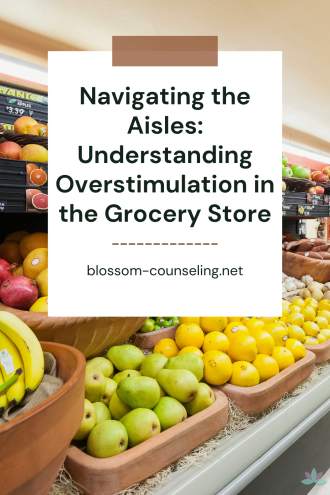
Imagine this: You walk into a grocery store, list in hand, ready to tackle your shopping. As you step inside, you’re hit with a barrage of sensory inputs – bright lights, colorful displays, a myriad of scents, the constant buzz of music and chatter, not to mention the ever-present beeping of the checkout scanners. It’s like walking into a carnival of commerce, where every stall vies for your attention. This, dear reader, is a classic recipe for overstimulation.
Overstimulation happens when our brains are bombarded with more inputs than they can process. It’s like having 30 tabs open on your computer; eventually, things are going to start freezing up. For some, especially those sensitive to sensory input or those dealing with anxiety, this overstimulation can make a simple grocery run feel like navigating a minefield.
The Brain’s Supermarket Sweep
When we talk about overstimulation in the grocery store, we’re really discussing how our brains interact with our environment. Our brains are hardwired to process sensory information, but there’s only so much bandwidth available. In the grocery store, with its visual clutter, overlapping sounds, and sometimes even competing smells (fresh bakery bread versus the fish counter, anyone?), our brains can go into overdrive.
The Impact of Overstimulation
The effects of overstimulation can range from mild discomfort to severe anxiety. You might find yourself feeling irritable, overwhelmed, or fatigued. Decision-making becomes a Herculean task when faced with twenty types of olive oil or a freezer full of ice cream flavors. For some, this sensory overload can trigger anxiety or panic attacks, making grocery shopping an ordeal rather than a routine task.
Strategies to Tame the Sensory Beast
1. Plan Ahead: Before you even step foot in the store, have a game plan. A detailed list organized by department can streamline your trip and help keep your focus on the task at hand.
2. Off-Peak Hours are Your Friend: Shopping during quieter times can significantly reduce the sensory input from crowds and checkout lines. Early mornings or late evenings tend to be less chaotic.
3. Mindfulness in Aisle 5: Practicing mindfulness can be a great way to center yourself amidst the chaos. Take a moment to focus on your breath or ground yourself by paying attention to the weight of your feet on the floor.
4. Earbuds In, World Out: Creating a personal soundscape can help block out overstimulating noise. Whether it’s calming music, an engaging podcast, or white noise, find what works for you.
5. Short and Sweet: Limit your exposure by making your trips as brief as possible. This might mean more frequent outings but less time per visit.
6. Explore Alternatives: Online grocery shopping or pickup services can be a godsend for those who find in-store shopping overwhelming. It allows you to avoid sensory overload altogether.
The Silver Lining
If you find grocery stores overwhelming, know that you’re not alone. Acknowledging your feelings and implementing strategies to manage sensory overload can make all the difference. Overstimulation in the grocery store is a common experience, and finding ways to navigate it can not only make shopping more bearable but can also empower you in other areas of life.
Understanding overstimulation is the first step toward managing it. By adopting coping mechanisms, we can make these necessary trips more tolerable and less taxing on our mental well-being. Remember, it’s okay to prioritize your comfort and choose alternatives that work better for you. In the grand scheme of things, how we get our groceries is less important than preserving our peace of mind.




